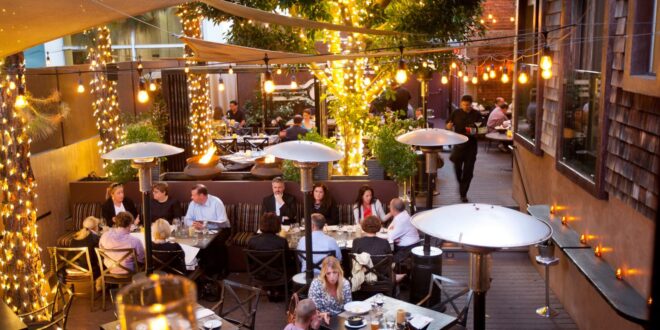Technology continues to change the food industry, from fast-food joints to Michelin-rated restaurants. Here are a few of the most notable technologies.
Enter any restaurant and the first thing you will likely notice is the technology used in nearly everything from the kitchen to the counter, as well as the free Internet access granted to customers. The mix of old school and new school technologies makes for a more pleasant dining experience for customers, especially when these are used for speeding up ordering and delivery.
Here are the most notable old school and new school technologies that we have seen so far in most restaurants, from the likes of McDonald’s to French Laundry. Not every restaurant will have all of these technologies, of course, but it isn’t the quantity that matters but the improved quality of customer service that the technologies bring to the table.
Cash Drawer
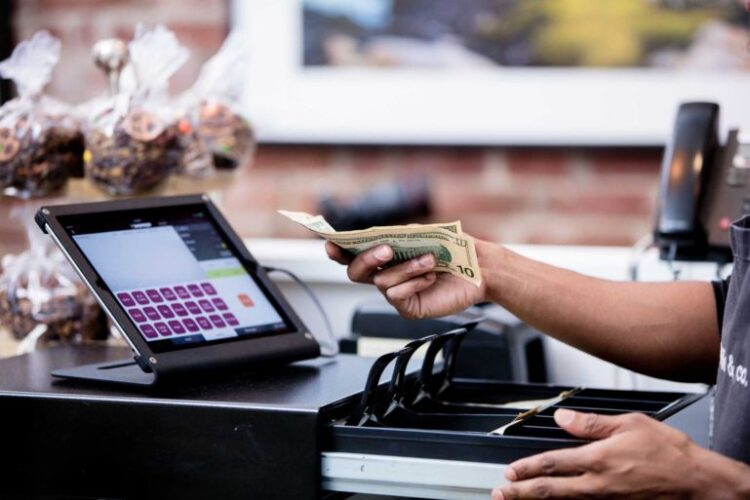
Of all these technologies, the cash drawer is the oldest but it’s the most ubiquitous for a good reason – it’s the place where the cash is kept. Its value in terms of safety and efficiency cannot be overemphasized, with or without the other technologies mentioned here.
The modern cash drawers are synched with the point of sale (POS) terminals, a technology that allows for efficient recording of all transactions. Some restaurants such as Applebees’s have an individual point of sale terminals on each table so that customers can pay digitally without having to involve the waiter or waitress. In addition, since this is essentially a fancy tablet, it can even include some games to entertain your children before you checkout.
Touchscreen Terminal
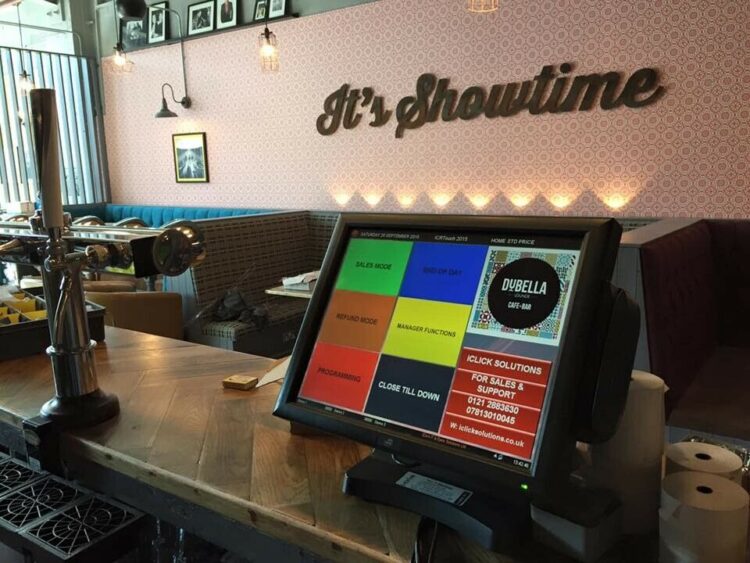
The touchscreen terminal is as common as the cash drawer in modern restaurants for good reasons. Most, if not all, touchscreen terminals are customized according to the specific menus of the restaurants using them. Thus, a touchscreen terminal for Atomic Wings will be completely different from that of Wingstop, even as these restaurants share similarities in their menus.
Touchscreen terminals are also designed with intuitive interfaces that benefit both the staff and the customer. For the staff, the intuitive interface means faster order taking, an essential aspect of operations efficiency and customer service. For the customers, it means getting their food delivered to their table quicker and with more accuracy than, say, a waitress taking down notes with pen and paper.
Most, if not all, modern touchscreen terminals also have a built-in credit or debit card reader. In drive-through restaurants, these are also connected, so the staff preparing the food will immediately be notified of your order as soon as the cashier punches it in, utilizing the tech.
Indeed, it’s convenience for the customer!
On the other hand, if you plan on opening fancy restaurants and to offer premium to your clients, keeping traditional menus is a must. In todays world full of technology, both fast food and premium restaurants will be getting clients that are tech savvy, but nevertheless, a premium leather menu will definitely attract attention of your clients so it is a wise choice to opt for this.
Self-Order Kiosk
Panera Bread, Wendy’s and McDonald’s are among the many fast-food and quick-service restaurants that have adopted the self-order kiosk technology to improve their customers’ dining experience. The appeal for customers of self-service kiosks likes in their ease of use, attractive visual quality, and convenience, especially in skipping the long lines at the counter. This also lowers the rate of wrongfully fulfilled orders because the middle person taking the order is taken out of the process, so it decreases the chance of human error.
The customers can choose and alter their orders using the touchscreen pads, find a table, and then wait for their orders. It’s as convenient as it can be.
For the restaurants, the appeal lies in the opportunity to upsell their products without being too pushy, a common complaint about customers who don’t want to upsize their drinks or add to their orders. Plus, self-serve kiosks can shorten the lines, free up the staff members’ time to perform other tasks, and get the restaurant into the forefront of technology.
Kitchen Display Screen
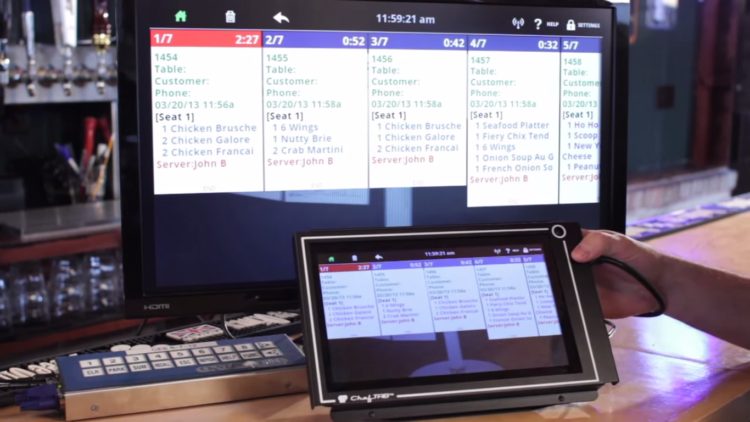
The kitchen being the heart of any restaurant, it’s also the place where technology is applied to best use. The most common is the kitchen display screen, a wall-mounted monitor, showing the open orders for the kitchen staff. The technology keeps things organized in the kitchen while also keeping the front line staff sane, so to speak. For customers, the kitchen display screen can look hectic and unorganized, but believe it or not, there is a specific order of things designed around efficiency and ease of use.
And if the kitchen staff have their display screen, then the waiters have their handheld tablets. The wait staff use these handheld tablets in taking food orders from the customers and getting their payments; these may have credit card readers. The devices make it faster for the wait staff to serve the customers as well as lessen the time spent walking to and fro.
Artificial Intelligence
While robots taking orders and serving the food isn’t in the near future – yet – a few restaurants are taking artificial intelligence into their businesses. In a drive-thru burger restaurant in Colorado, for example, a robot greets customers as they pull up, takes their orders, and directs them to its human colleague to collect their food orders.
The robot can actually respond to the voice commands of the customers. According to the restaurant’s management, it will mostly benefit the employees who won’t have to endure the drudgery of taking hundreds of orders in a single shift. Plus, it benefits the business, too, in terms of decreased fraud and increased order sizes.
Recently, McDonald’s acquired an A.I. company to try to automate its drive-thru by showing personalized selections on the drive-thru menus. This is in addition to the previous acquisition of Dynamic Yield that McDonald’s made earlier.
Mobile Ordering
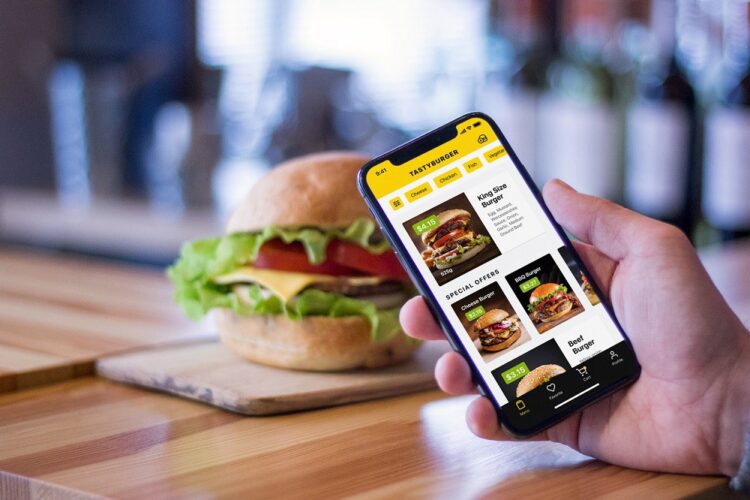
With the exploding popularity of the Internet, more and more customers are using it to order their food. They can choose whether to have the food waiting for them in the restaurant (pick-up) or have it delivered to their homes or offices. Obviously, a smartphone, tablet or computer with an Internet connection is a must to enjoy the benefits of mobile ordering. There are even websites like Pricelisto that keeps track of all restaurant pricing information so that you can compare different restaurants and perhaps save some money along the way.
Other ways that the Internet has been used by the food industry include ordering via social media particularly Facebook; informing customers of deals, promos, and news items; getting the word out about upcoming and current locations of food trucks, and offering online coupons.
 Hi Boox Popular Magazine 2024
Hi Boox Popular Magazine 2024
